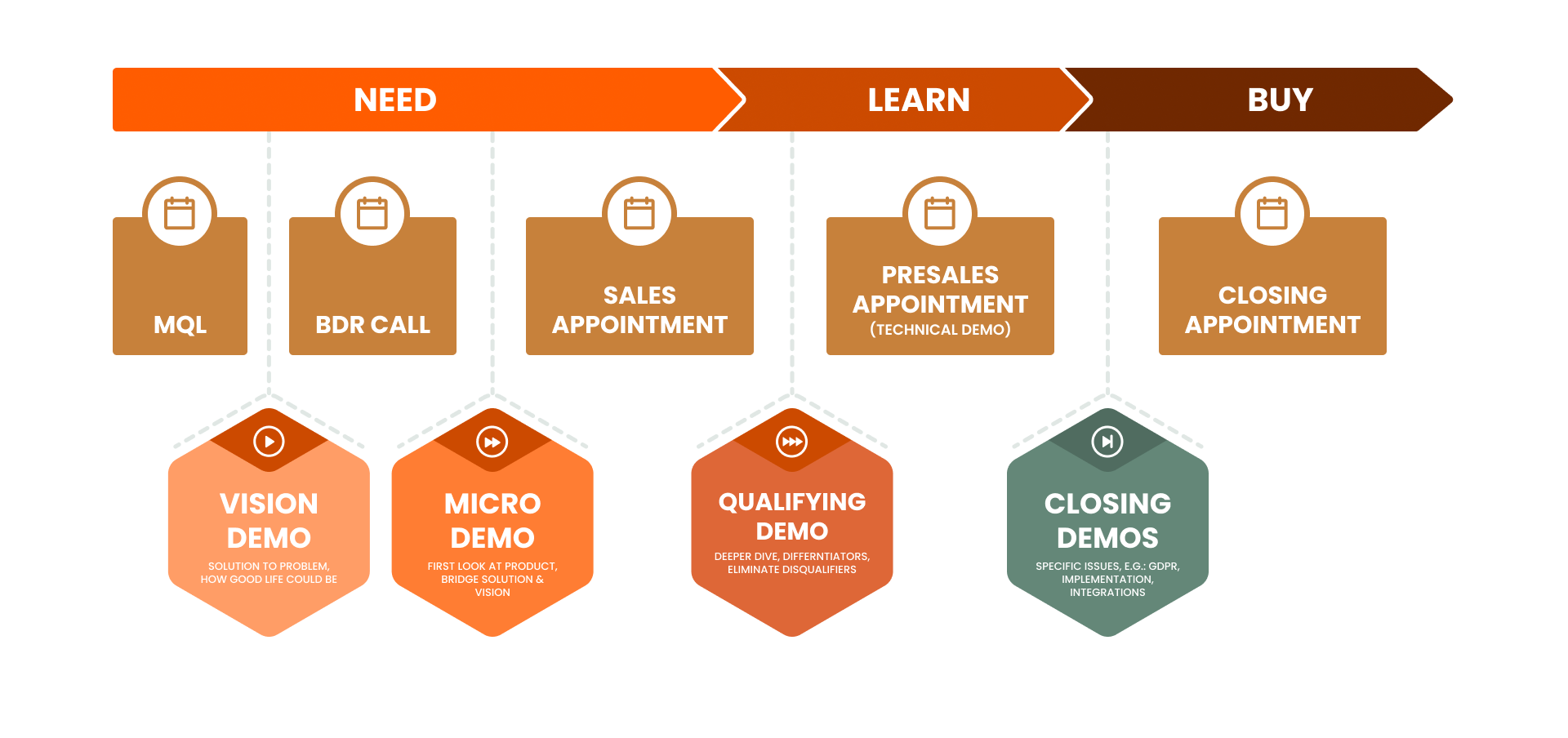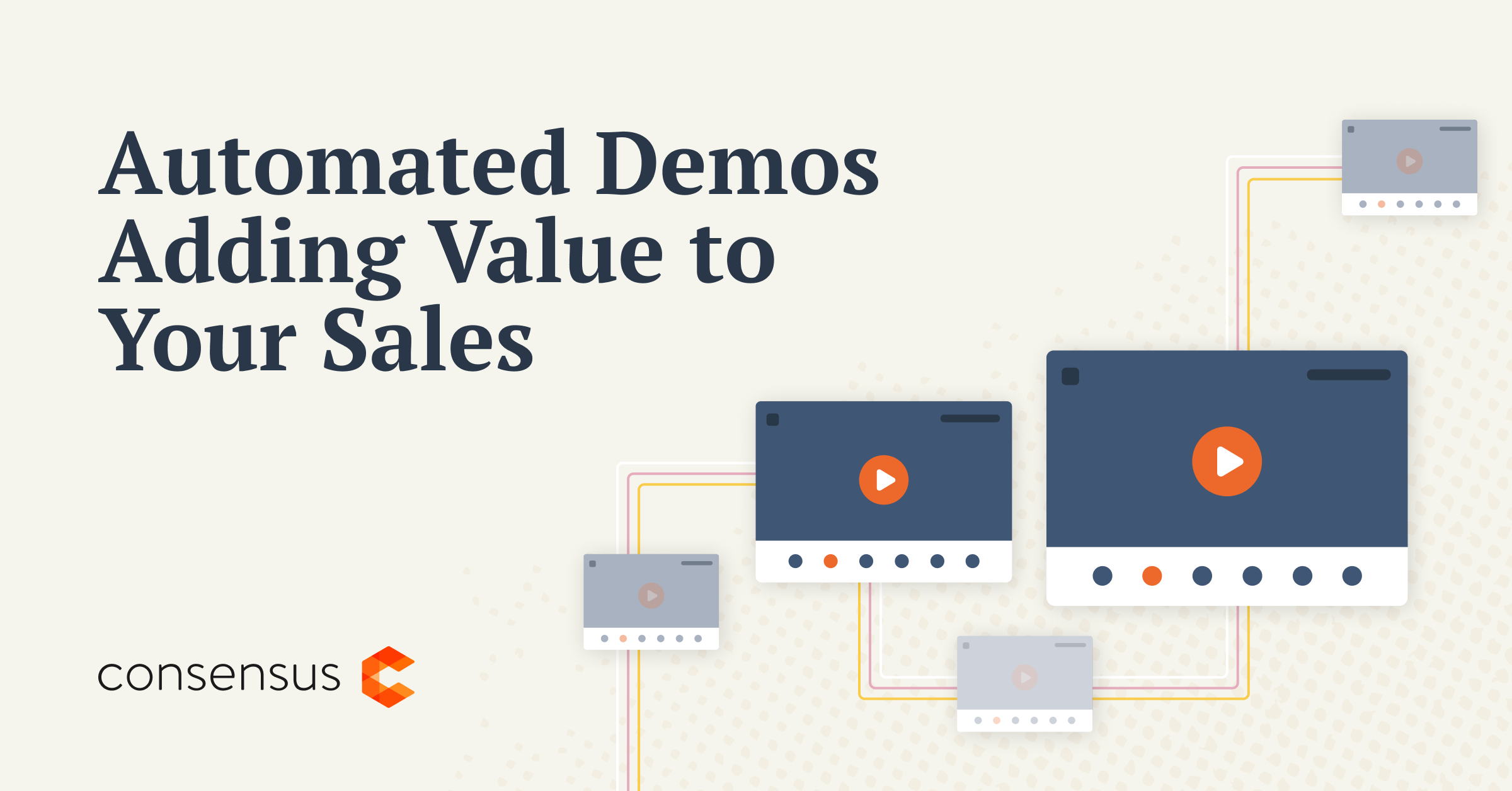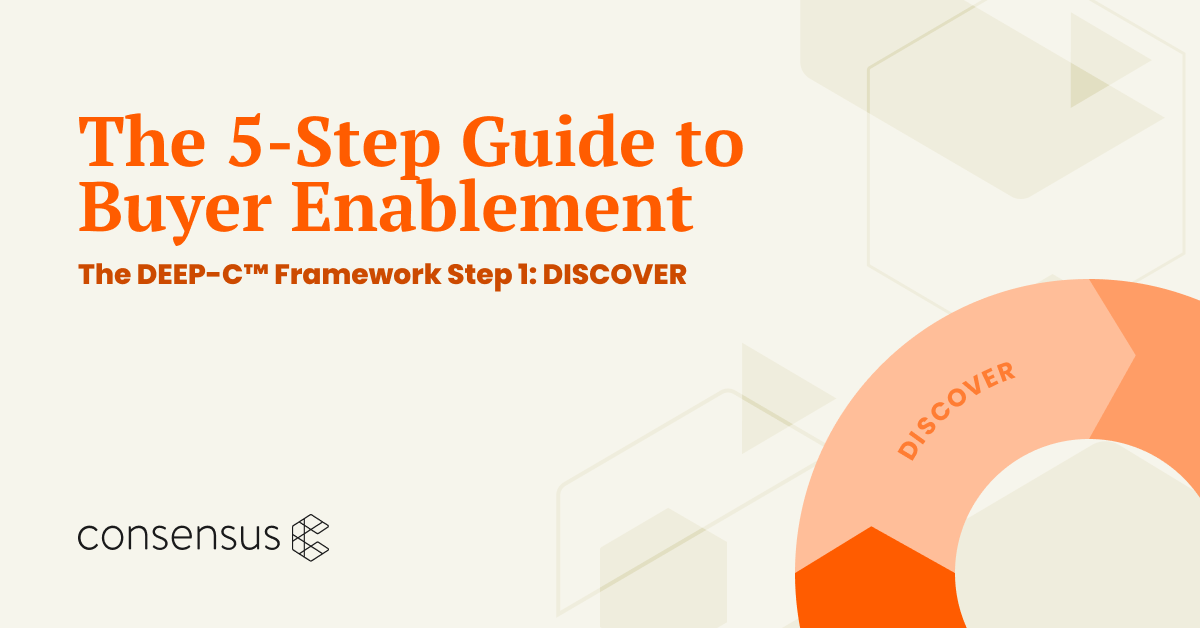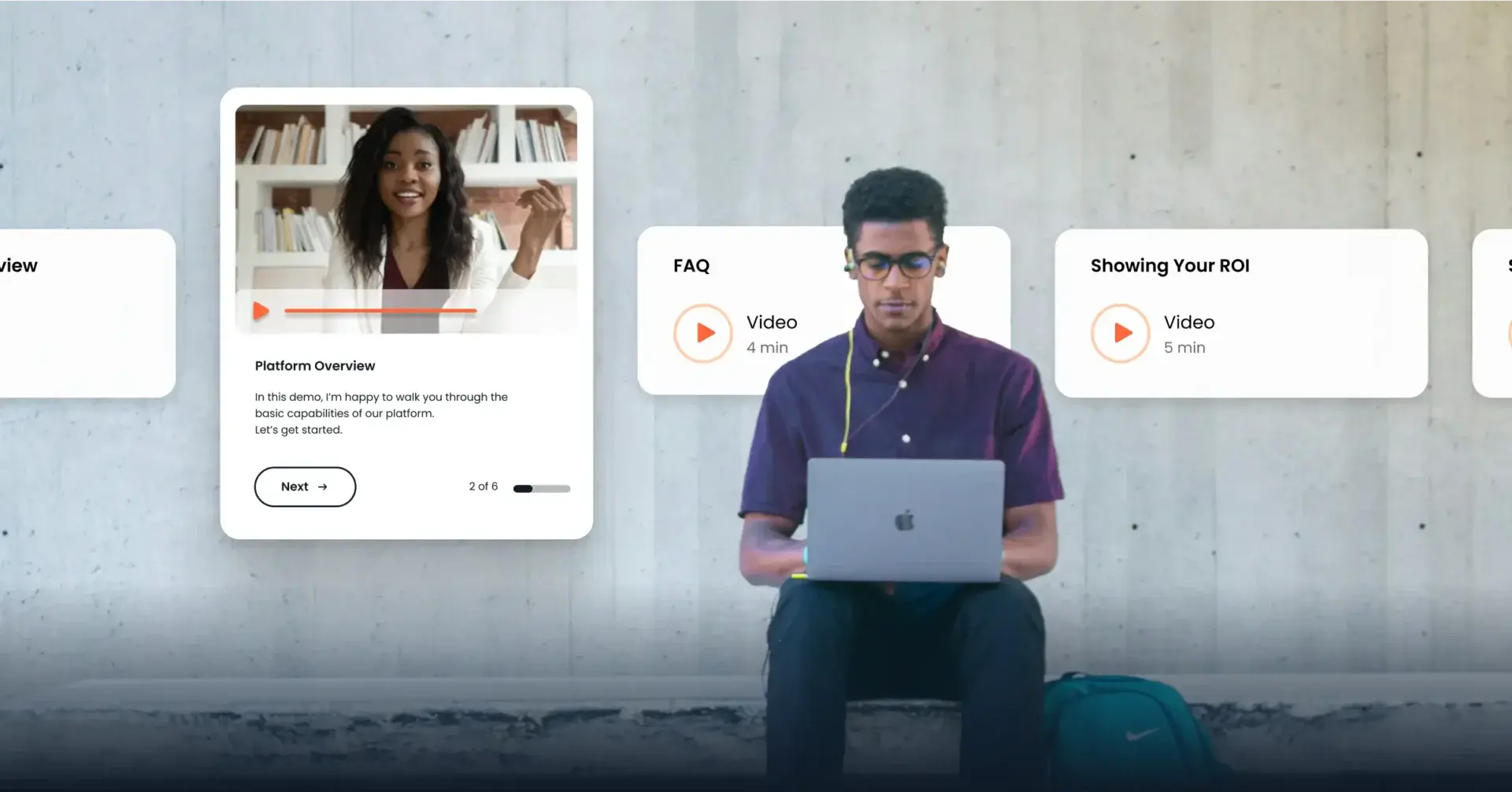Garin Hess is a serial entrepreneur with over 20 years of hands-on in-the-trenches experience. ...
Close more deals with
Demo Automation.
Watch a Demo
We’ve said it over and over because it’s true: sellers don’t close deals. Only the buyer can make the decision and sign contracts. There are ways to help get the buyers to that point, but the focus is on the buyer and the value you provide to them.
Most sellers are never in the room when a buyer makes the purchase decision, but you want to be. How do you get to every relevant stakeholder? How do you get a seat at the table with the buying group when they decide on their purchase? The short answer – technology.
Garin Hess, Consensus founder and CEO, and author of Selling is Hard. Buying is Harder, has lots of advice on how to be a better buyer guide, including leveraging your champion to sell internally for you. But you can’t expect your champion to do it all on their own. “Champions tend to bungle in their effort even though they’re very enthusiastic to sell inside the organization.”
In a webinar he hosted with Andy Paul, sales expert, author, and creator of the Sales Enablement with Andy Paul Podcast, Garin outlined how automated demos add value to your sales and enable your champion.
Why Use Technology When You Have Trained Sales Teams?
Demos are a great way to engage with your customer. While the customer is getting all the information they’re looking for, you can figure out what issues they’re trying to solve. “When you think about the demo, everyone agrees it can be a powerful experience; it can be a very valuable moment for both the sales team and for buyers.” But the demand for demos has increased 40% YOY. Demo automation is one way technology can help you handle the increase in demand without stretching your teams.
When you send an automated demo, you can get data showing who watched and who shared the demo.
At Consensus we use our own demo automation platform (DAP) to accelerate the buying process. Here’s a story that Garin shared that illustrates.
We had an initial deal with a presales team at Oracle and we were hoping to get an expansion into a larger group, so we asked their champion to introduce us to a key stakeholder. This stakeholder would never respond to our sales team, but he would interact with our champion.
One day, our champion asked us a question about Consensus “demolytics”. Garin sent out an automated demo in response. It only took two minutes to send an automated demo, but that stakeholder ended up watching it for about five minutes and sharing it with others.
In 24 hours, the demo engaged 12 stakeholders (including the champion’s boss, who was the main stakeholder we were trying to reach)for over 76 minutes. This led to a meeting in London 6 weeks later and we close that expansion deal.
“By engaging with the demo, the customer gets more of what they want sooner. They have a great experience.”
This is one way technology can get you in the conversation even when you’re not physically there. There is no way to equip your champion, the stand-in for you in internal discussions, with every piece of information to satisfy every person in the buying group. While enthusiastic, they can just as quickly derail a sale as they can push it forward. Using an automated demo, you can spend time with a whole buying group by proxy.
Types Of Automated Sales Demos
Demos are a powerful tool for both you and the buyers. There are 6 core demo types that SEs need to be aware of, but you can automate 4 of them.
- Vision: Peeks at the problem, solution, and benefit and how it works, lasting five to seven minutes.
- Micro: This is a short demo that focuses on the product but is very brief and introductory. These should only cover one topic per demo and should be 10 to 12 minutes.
- Qualifying and Discover: Recaps the problem, solution, and benefit. It dives deeper into core functionality and usability in 15 to 20 minutes.
- Closing: A brief, one to three minute demo covering topics like integration.

“A demo is at its core trying to educate the customer about something they really want to know about and not giving them more than they need and not giving them stuff they don’t care about. At the same, having an interaction where you’re learning as well.” In the words of social scientist Herbert Simon, “…a wealth of information creates a poverty of attention…”
Too much information and your buyers won’t spare you the time to sort through it. By grabbing the stakeholders’ attention with just the right amount of information, the demo allows you to interact with them and learn from the experience.
How Do You Make Demo Automation Work For You?
Demo Automation can help buyers throughout the buying process. Here’s one use case early in the buying process. Your business development representatives (BDRs) often create the first impression when it comes to sales. By having your BDRs send out a vision demo before the first appointment, you can more accurately predict whether the opportunity will become a sale.
We put this into practice at Consensus. We had our BDRs reach out with a vision demo before the first appointment and measured the impact for 6 weeks. The results were astounding. “If the prospective buyer watches your automated, personalized demo prior to the first appointment, they are 34% more likely to become a qualified opportunity. If they share it with at least one person, that number increases to 81%.”
Our demos utilize software to gather data about the potential buying group. Once it is shared, you can discover and engage the buying group. You get notifications when they watch it, share it, and as each additional stakeholder engages. You can review the data to look at how aligned the buying group is and what drives each stakeholder’s interests before even having that first meeting.
How Does One Demo Make Such a Difference?
Each demo allows you to create a peak moment for your buyer, which is crucial. “One of the things Each demo allows you to create a peak moment for your buyer, which is crucial. “One of the things people are hesitant to show upfront are the features and the benefits that they provide. You don’t want to dive into it too deep, but buyers, more than any other piece of content, want a demo at every stage of the sales cycle.” The demo allows for that information to be customized to the viewer so that you don’t saturate them with information and drive them away.
A good demo will ask questions as part of the discovery process. This creates a better understanding of the buyer and what they need to be educated on. The topics that the viewer deems as very important will be the first thing they see in their demo, and the demo will also spend more time going in-depth on these topics.
Unimportant topics should be skipped altogether. The software should create a uniquely tailored demo experience around the watchers’ responses based on their role in the buying process. As buyers move through the buying process and get educated, their understanding of what they are interested in and capable of doing changes. “When you get the buyers what they need, things are going to speed up and it can also help increase sales at the same time.” Demos are a perfect way to confirm that understanding at each step of the buying process and customize the information accordingly.
What Is The Overall Result?
If by chance your solution is not right for a potential buyer, demo automation software can help them know that from the start. Gartner estimates that buying groups are taking up to 18 months to make a purchase decision. The last thing you want to do is waste 18 months of sales effort only to have the buyer decide to go in a different direction. “Yes, we want them to make a decision that involves our solution, but if the answer is no, we’d rather get a no and get it fast.” When you give them the right buyer enablement tools from the start, you can minimize this risk.
NOTE: Want to reduce unqualified demos? Check out our article on the Demo Qualified Lead (DQL)
Think of yourself as a buying coach. You are guiding your champion and the buying group to the optimal purchase decision. “What is the result of Buyer Enablement in all of its forms? Ultimately, it’s to get to a faster purchase decision.” You can help them do this as efficiently as possible using the right technology. The discovery and engagement processes can happen effortlessly, all while shortening your sales cycle and leading to higher closing rates.





